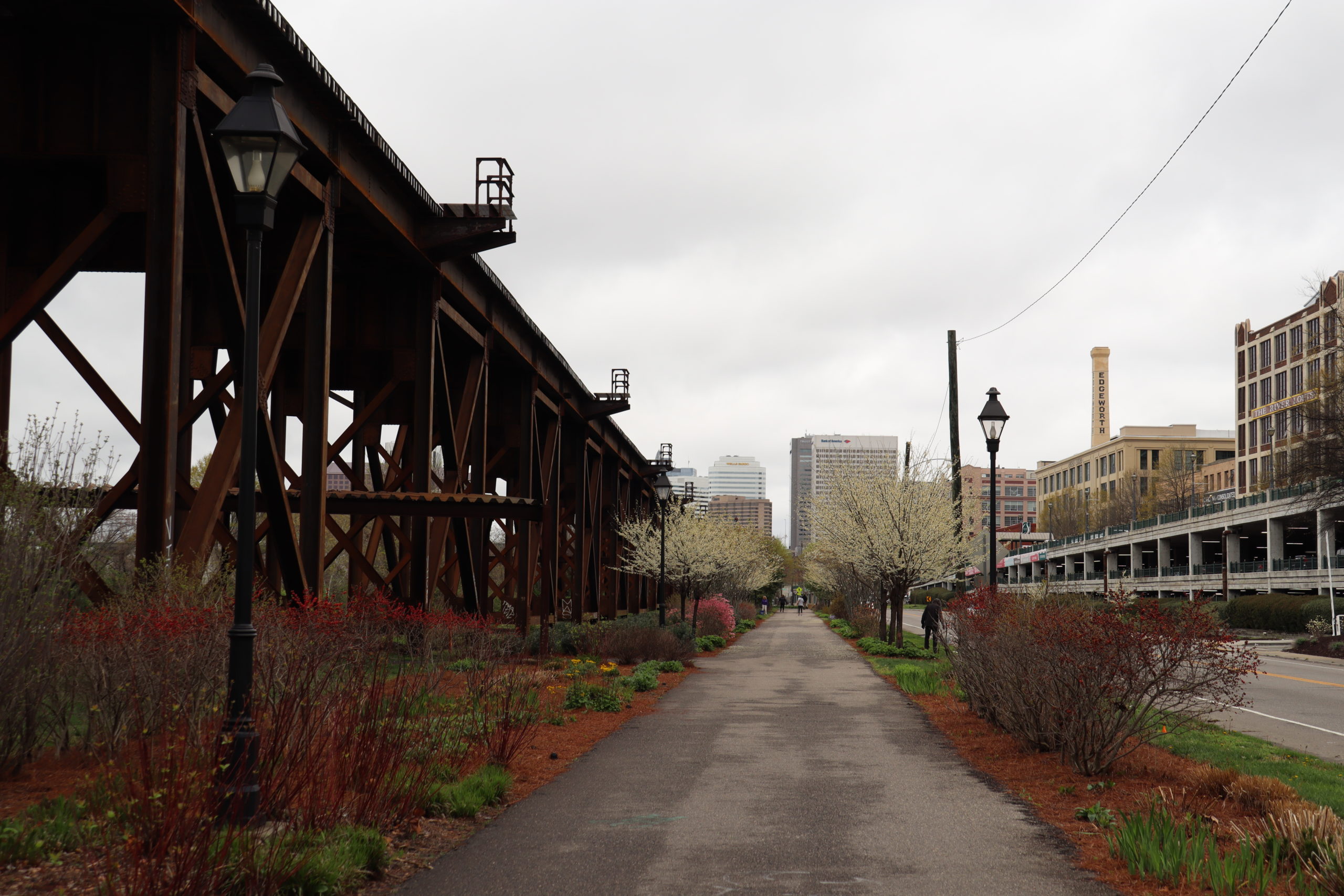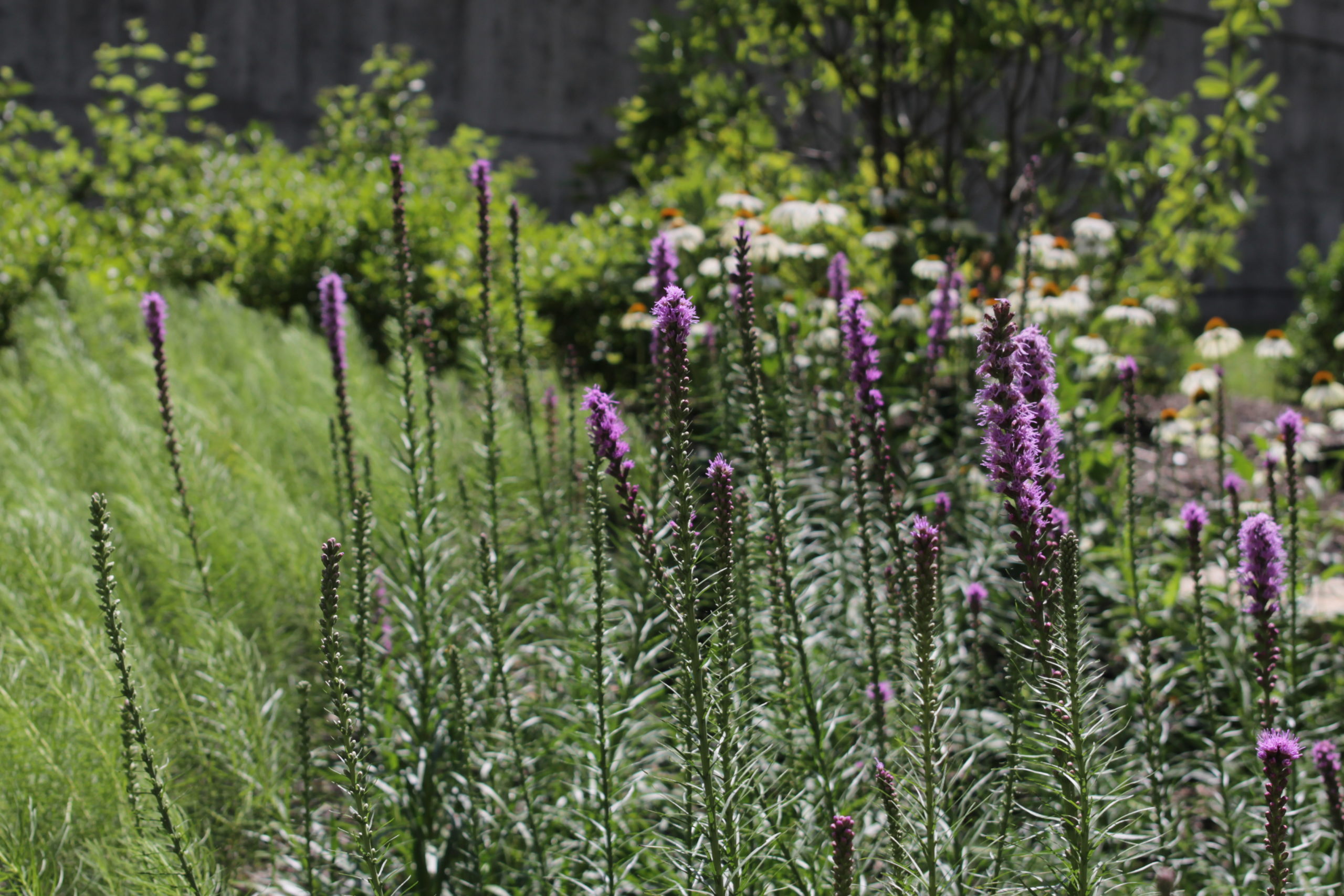Author: Anna G. Aquino
I cringe when I think of the many times I have promoted the value of a plant, star magnolia comes to mind, stating that “its leaves in August are pristine, not a bite taken out of them. I suggest we plant it!” It is easier to forgive myself when I read Doug Tallamy, the famous entomologist who many credit with igniting native plants awareness and author of Bringing Nature Home. (1) Tallamy confesses that despite devoting his academic and professional careers to studying plant-insect interactions, it took him decades to realize that insects can subsist only on plants with which they share an evolutionary history. (2) Native insects cannot survive on exotic plants, and the intentional widespread planting of aliens is, to use his words, “not such a good idea.”
Landscape management practices need to be turned on their ear. At Capital Trees’ public landscape projects, we are well-placed to do so, to upend conventional practices and put conservation and sustainable ecology practices on display for our visitors. Visionaries who conceived the Capital Trees’ public gardens along the Kanawha Canal at Richmond’s Dock Street have set the table, tackling the daunting job of constructing a park on a stretch of formerly overgrown and neglected urban land. Capital Trees’ Great Shiplock Park, the Low Line Gardens, and the Low Line Green, border the western terminus of the Capital Trail, a 52-mile paved cycling trail from Jamestown to Richmond. These public gardens were conceived to rehabilitate forgotten sites by removing invasive plants and introducing an array of native plants and restoring lively ecosystems shared by wild and human guests.

The United Nations in 1987 defined sustainable development as “development that meets the needs of the present without compromising the ability of future generations to meet their own needs.” (3) Specifically applied to landscape management, sustainable practices embrace methods, technologies and materials that do not deplete resources or cause lasting harm, a condition where landscape projects are an environmental asset rather than a drain, where energy and resource inputs are minimized, and where waste approaches zero. A sustainable landscape reinforces the local ecosystem it inhabits, and benefits both wildlife and people. Key to creating a sustainable landscape is an appreciation of the ecological systems at play, for example understanding the soil food web will end dependence on synthetic fertilizers.

Conserving water resources and fossil fuels, sequestering carbon, reducing erosion, curtailing toxification of the natural world are some of the many advantageous outcomes of organic programs. These outcomes render the landscapes sustainable. The best landscape management practices mirror what we witness in natural undisturbed systems and are a template for managing built systems. In addition to the benefits just listed, organic management is less expensive. I found a fantastic book Organic Management for the Professional, which explains why organic programs are more cost-effective than synthetic programs, along with the huge benefit that they are earth friendly. “Any project can be converted from toxics to organics at the same budget. What is more important is that the organic program costs are reduced every year. Under an organic program, the soil gets better and better forever – just as the natural forest and prairie soils do.” And further, “Toxic pesticides and high nitrogen synthetic fertilizers, on the other hand, hurt the soil and pollute the environment. The end result is the destruction of the soil. The natural organic method on a large scale is the only answer. Nature’s method was in place and functioning perfectly on a global scale long before humans appeared on earth.“ (4)
Several years ago as a Capital Trees Board member and committee chair I was assigned horticultural management of our projects along the canal. I vividly remember watching a trigger being pulled to dispense a toxic synthetic chemical on a lowly chickweed rather than leaning to pull it, that was the moment I was inspired to research a report entitled “Capital Trees—Sustainable and Organic Practices for Our Public Landscapes.” Capital Trees roundly embraced it in furtherance of its exemplary land stewardship, and visitors are embracing our forward-thinking sustainable and organic methods as are other greening groups. This blog will catalog sustainable practices and explain why they support the health of the whole system from the minutest soil fungi to the largest oak, leading to improved conditions. In 2022, look for upcoming posts: the value of sustainable methods, understanding soils, the other World Wide Web, weeding, creating a mulch-improved soil, soil testing, and more. We would love to hear your experiences and outcomes on these topics, please join the conversation.
References:
(1) Doug Tallamy, Bringing Nature Home: How You Can Sustain Wildlife with Native Plants, Updated and Expanded/?Timber Press; 2nd edition (September 1, 2009)
(2) https://www.smithsonianmag.com/science-nature/meet-ecologist-who-wants-unleash-wild-backyard-180974372/, https://www.torontogardens.com/2016/10/doug-tallamy-on-wildlife-no-caterpillars-no-chickadees.html/
(3) https://www.un.org/en/academic-impact/sustainability; http://www.un-documents.net/our-common-future.pdf
(4) Howard Garrett, John Ferguson, and Mike Amaranthus, Organic Management for the Professional, University of Texas Press (April 1, 2012)


